Top 20 Dilijan attractions: temples, museums, nature
Dilijan and its surroundings are a real treasure trove of interesting places and attractions from different eras - from the Middle Ages to the present. We present to you the top 20 places that will help you learn more about the rich history of Dilijan and feel the magic of this unique city.
Temples
Haghartsin
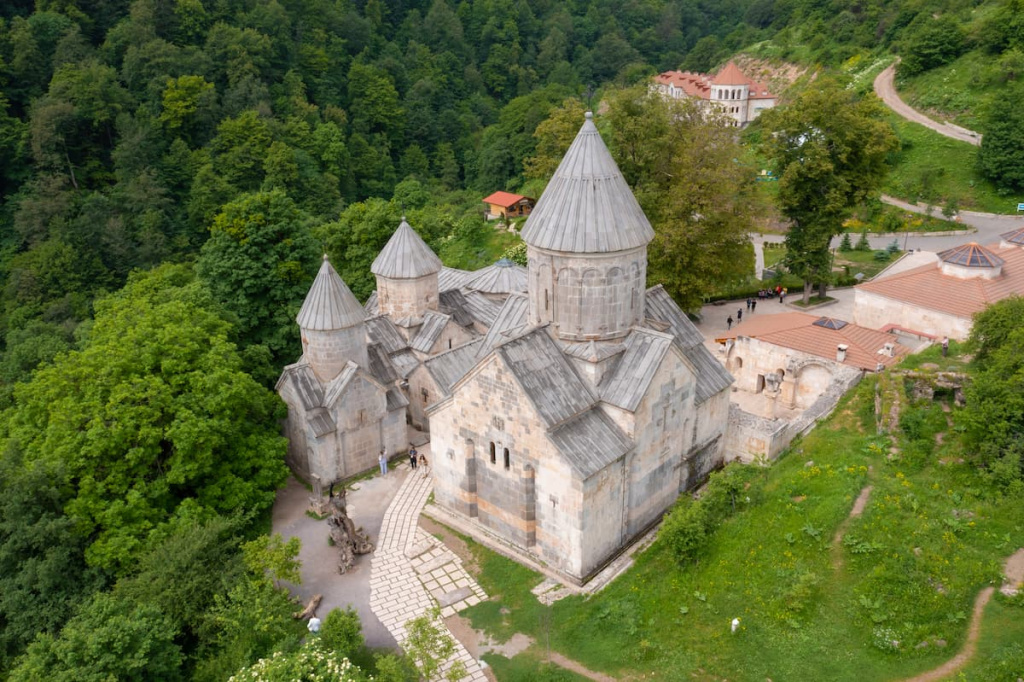
A 15-minute drive from Dilijan is one of the main attractions of Tavush and the whole of Armenia - the monastery complex of Haghartsin. It is an example of the perfect harmony of nature and architecture. The monastery was built during Medieval Armenia (9th-11th centuries), which was ruled by kings from the Bagratid dynasty. Originally it was the summer residence of the tsars. Haghartsin is an outstanding monument of medieval Armenian architecture, consisting of three churches, tombs and a refectory. This is a vivid example of traditional cross-domed architecture with decorative facades. Another unusual object on the territory of the monastery complex is an oak tree planted by princes from the Zakarian family - which means that it is almost as old as a monastery! Of course, only a part of it has been preserved at the moment, but the tree stands as a monument to perseverance through the centuries.
Matosavank
Matosavank is a temple complex of the Armenian Apostolic Church of the 13th century, 4 km west of Dilijan, near the village of Shamakhyan. Matosavank Monastery was founded by Avag, a representative of the princely Zakarian family. This family became famous for their heroic deeds in the name of Armenia, as well as for the historical and cultural heritage left behind. According to sources, the temple complex was built in honor of the victory of the united Armenian-Georgian army over the Seljuk Turks. This, in principle, explains its remote location. The complex consists of a small church, a vestibule and a scriptorium (book depository), located right next to each other. A cemetery is located to the southeast of the buildings. The small church of 1205 was built with large semi-finished stones. An inscription about the foundation is carved on the facade stone, and khachkars stand on both sides of it. Under the wall of the church, in the northern part, a khachkar of special beauty, dating from 1251, stands apart.
Jukhtakvank
Jukhtakvank is another authentic monastery hidden in the forests of Tavush near Matosavank. It consists of two separate churches built in the XII-XIII centuries – the Holy Virgin and St. Gregory. This fact explains the meaning of the monastery's name: "jukhtak" means "couple" in Armenian. The monastery with its ancient, moss-covered khachkars and the surrounding nature is a stunning sight.
Goshavank
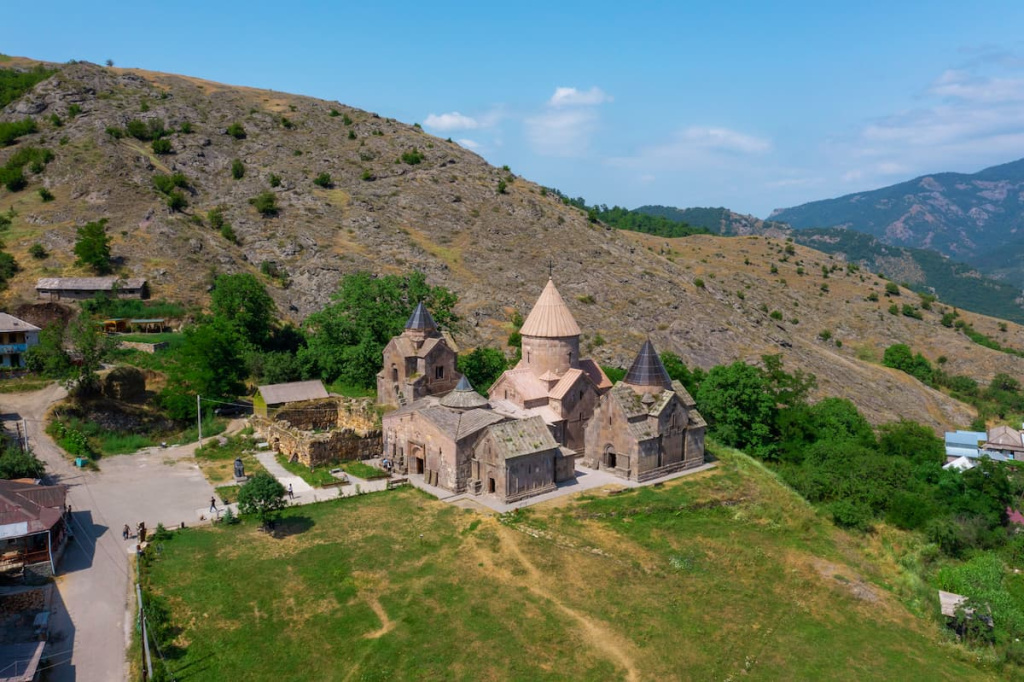
Goshavank is a monastery complex of the XII-XIII centuries, located in the picturesque village of Gosh, 15 km east from Dilijan. The monastery was founded by the outstanding historian, theologian Mkhitar Gosh, the author of the first Armenian judicial book. There is the funeral chapel of Mkhitar Gosh, where he lived and worked for 25 years. Goshavank was also mentioned by historian Kirakos Gandzaketsi as an educational and cultural center of its time. Famous Armenian historians and theologians were educated there, and manuscripts and miniatures that have survived to the present day were created there. On the territory of Goshavank there is an amazing khachkar of the finest workmanship with the telling name "Aseghnagorts" (Embroidered with a needle). Not far from the monastery in Dilijan National Park there is a small picturesque lake Gosh.
Aghavnavank
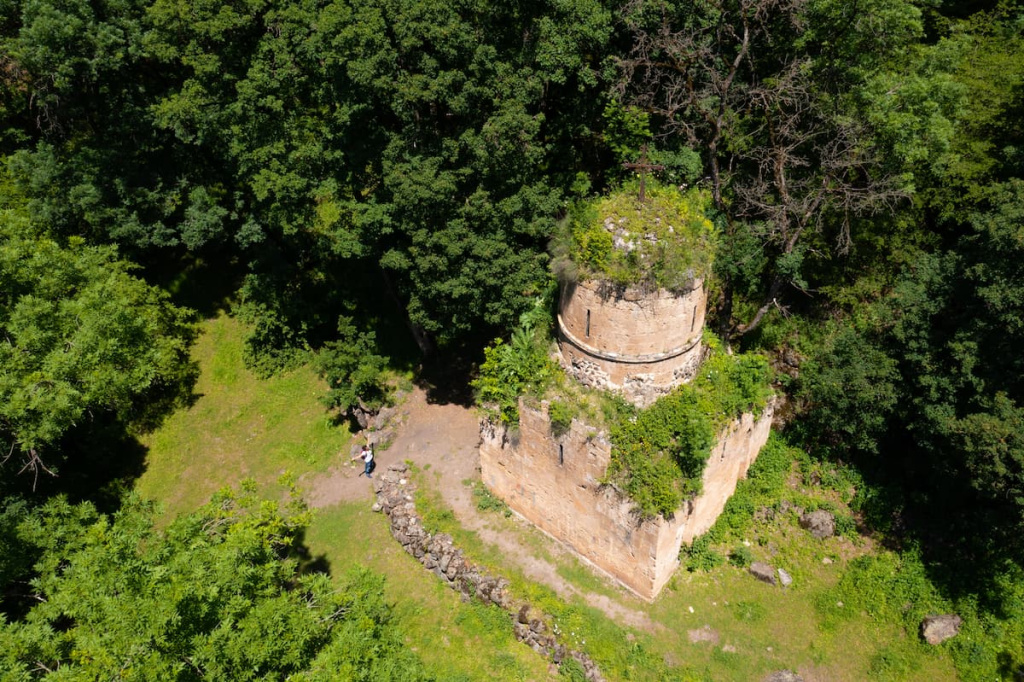
Aghavnavank is a medieval temple complex of the XI-XII centuries, located in the village of the same name, 26 km from Dilijan. The amazing monastery is hidden in the thick of a yew grove of unique relict trees, whose age reaches 300-400 years. In the past, it was a place where monks found solitude away from the hustle and bustle of the world. In the Middle Ages, Aghavnavank had strategic importance: by turning on the light in the temple, local residents transmitted information about the impending danger to other settlements, towards Goshavank, and from there to Haghartsin.
Nature attractions
Dilijan National Park
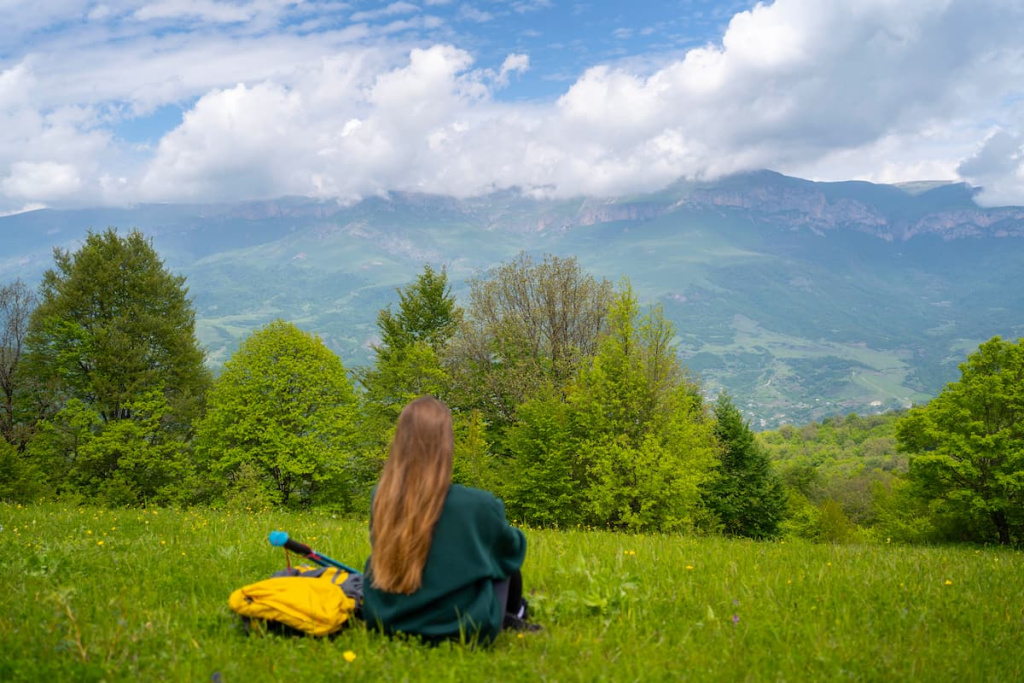
In order to preserve and enrich the flora and fauna, Dilijan National Park or, as it is otherwise called, Dilijan Reserve was established in 1958, with an area of 24,232 hectares. Almost half of the plant species found in the Caucasus can be seen there, a third of which are endemic. The combination of dense forests, mountain lakes and picturesque mountains attracts many tourists here. This place is the real pride of the locals.
Akhnabat Yew Grove Reservation
The Akhnabat Reservation is a specially protected natural area at an altitude of 1,400-1,700 m above sea level, one of the 26 nature reserves in Armenia. There are unique groves of mahogany - natural monuments of the second millennium, the largest in Transcaucasia. There are red trees (yew) with a height of 25 meters and a trunk diameter of 70-90 cm, whose age reaches 300-400 years. The yew tree is called red because of the color of its wood. It became known to mankind 3,000 years ago - wood resistant to rotting in water, fungi and insects was an ideal material for making sarcophagi, military tools, household items and, of course, furniture.
Drunken Forest
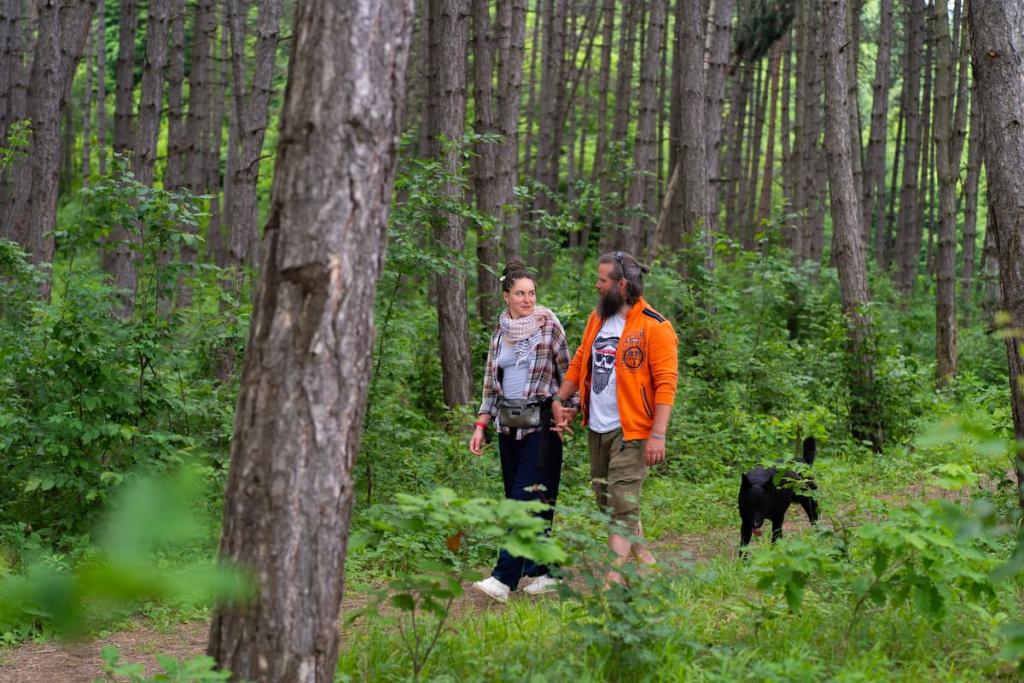
A special sight is the pine forest near the city of Dilijan - the "Drunken Forest". This unusual natural monument was formed due to landslides and is famous for its curved tree trunks, from which the forest got its name. The "Drunken Forest" stands on a hill, a small path leads to it from the "mainland" part of Dilijan. It is very pleasant to relax there in the bosom of huge pine trees lined up in a row, and see sunsets on the edge of a cliff.
Lake Parz
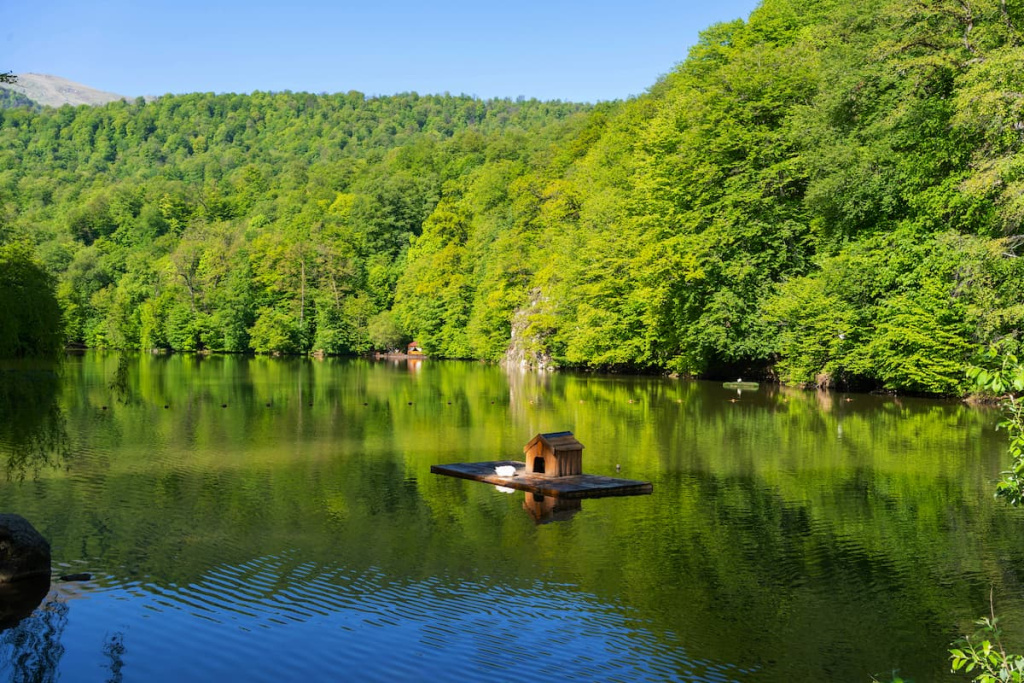
To the north-east of Armenia, where at an altitude of about 1400 meters in the Dilijan Nature Reserve hides a miracle of nature, the pearl of Dilijan and Tavush - Lake Parz, which got its name due to its transparency (“parz” translates as “clear” from Armenian ). This is the largest lake in Dilijan: the total length is 385 meters, the width is about 85 meters, and the depth is more than 5 meters. Lake Parz has a landslide origin. The lake, surrounded by a forest, creates a feeling of isolation from the hustle and bustle of the city and full immersion in nature. The water in Lake Parz is from pure mountain springs.
Lake Gosh
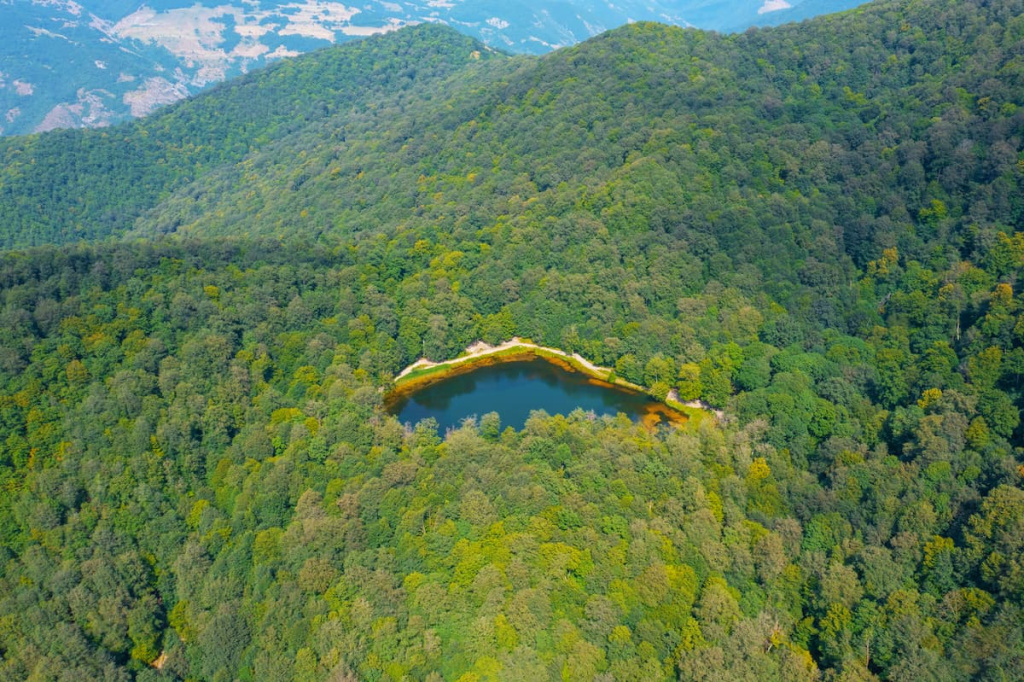
Near Goshavank there is another attraction of natural origin - Lake Gosh, which is a picturesque sight. Surrounded by a dense green forest, it looked like something out of a painting. Lake Gosh has a landslide origin, and its ecosystem consists of various birds and insects.
Mount Dimats
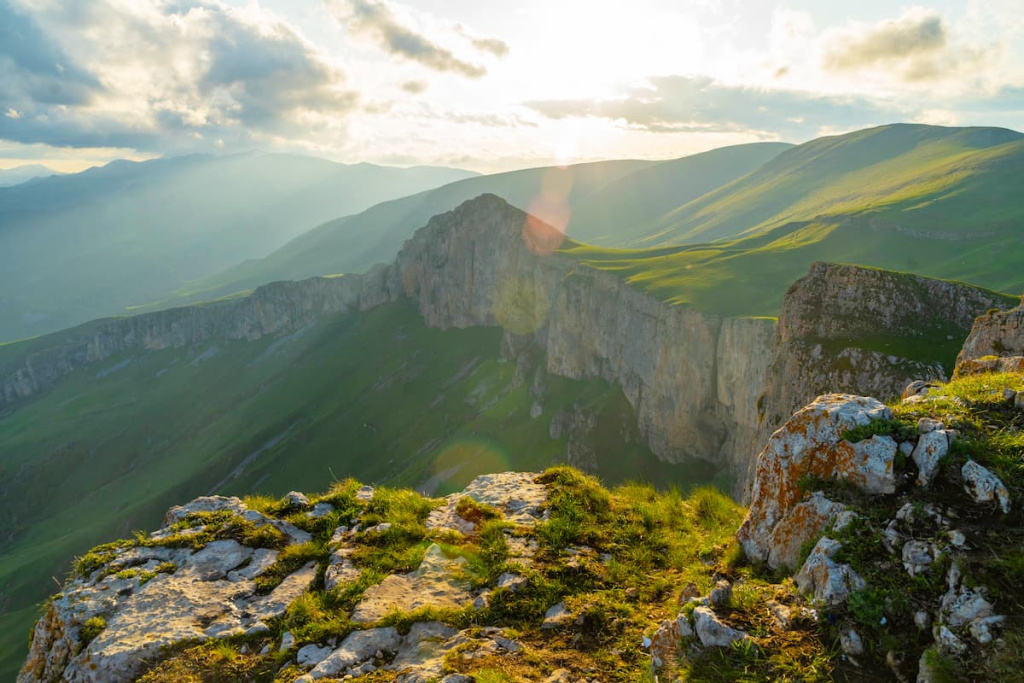
Mount Dimats is a mountain peak in the Tavush region of Armenia, in the southwestern part of the Ijevan Mountains, 5 km northwest of the village of Haghartsin. With a height of about 2378 meters above sea level, it rises above the surrounding forests and valleys. Dimats Mountain is visible from almost any point of Dilijan, and is also visible during hiking in the Dilijan Nature Reserve. This majestic natural landmark is famous for its unique nature, diverse flora, as well as impressive panoramic views of the surrounding mountains and valleys.
Mount Ayrikar
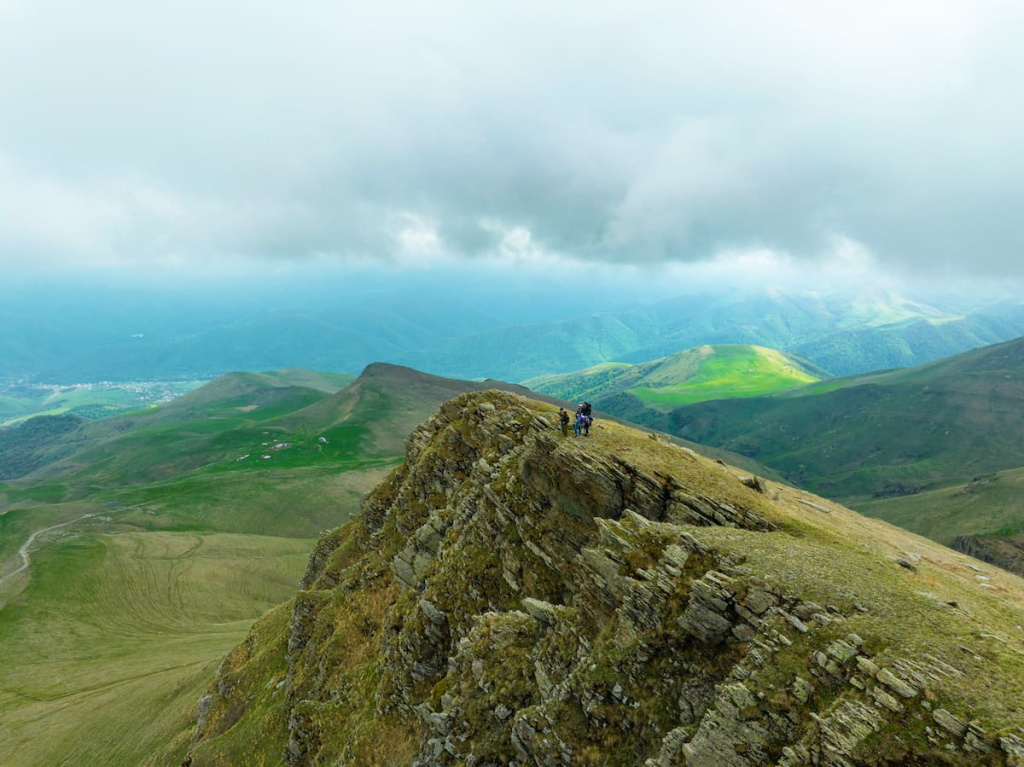
Ayrikar Peak is located at an altitude of 2767 meters above sea level. However, the most interesting thing awaits you not at the top, but next to it – at the hanging rock, which is popularly called "Simba's rock». There is a stunning view from there, which really resembles the famous scene from the cartoon "The Lion King". Clouds often gather in this place, blocking the view of the valley and you have the feeling that you are floating above the ground.
City landmarks
Monument "Mimino"
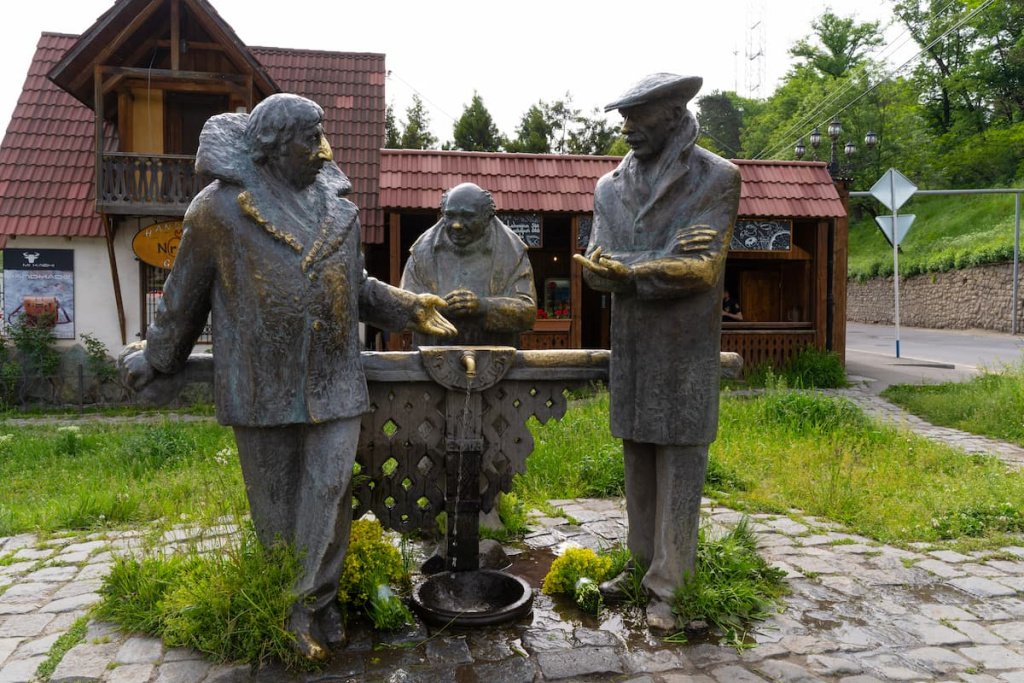
Without exaggeration, the monument to Mimino can be called one of the symbols of Dilijan. The most famous monument in the city is located in the center, near the ring road and is dedicated to the heroes of the famous Soviet film "Mimino": Rubik (Frunzik Mkrtchyan), Valiko (Vakhtang Kikabidze) and Volokhov (Yevgeny Leonov). An Armenian, a Georgian and a Russian greet the guests of the city, reminding them of eternal values and friendship. "You open the faucet in Dilijan, the water flows - it takes the second place in the world," boasted the hero of the film Rubik. With this phrase, he once intrigued tens of millions of viewers. A fountain is installed between the characters, from which the same water flows. The monument was built in 2011 and was immediately loved by both guests and locals.
Monument to the 50th anniversary of Soviet Armenia
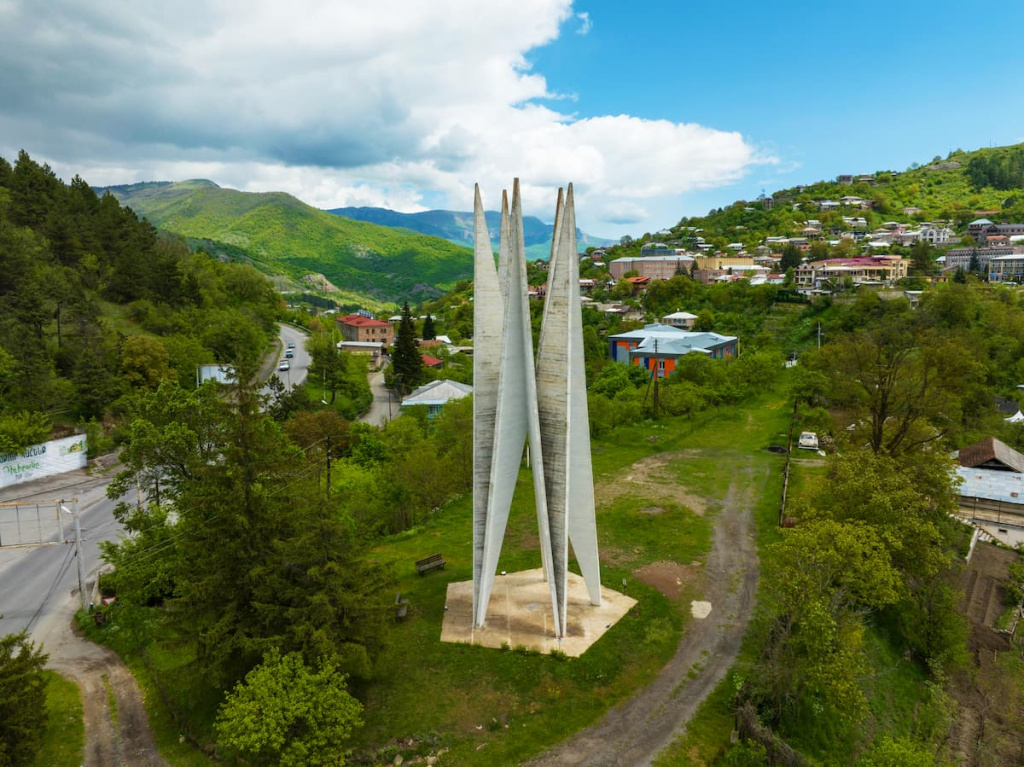
Another symbol of Dilijan, which can be seen from all the observation decks of the city, is a white five-pointed star - a monument dedicated to the 50th anniversary of the establishment of Soviet power in Armenia. The monument is made in the style of Soviet modernism, organically fitting into the landscape of Dilijan, was installed in 1970. Each of the five ends symbolizes one decade.
The Old Dilijan Complex
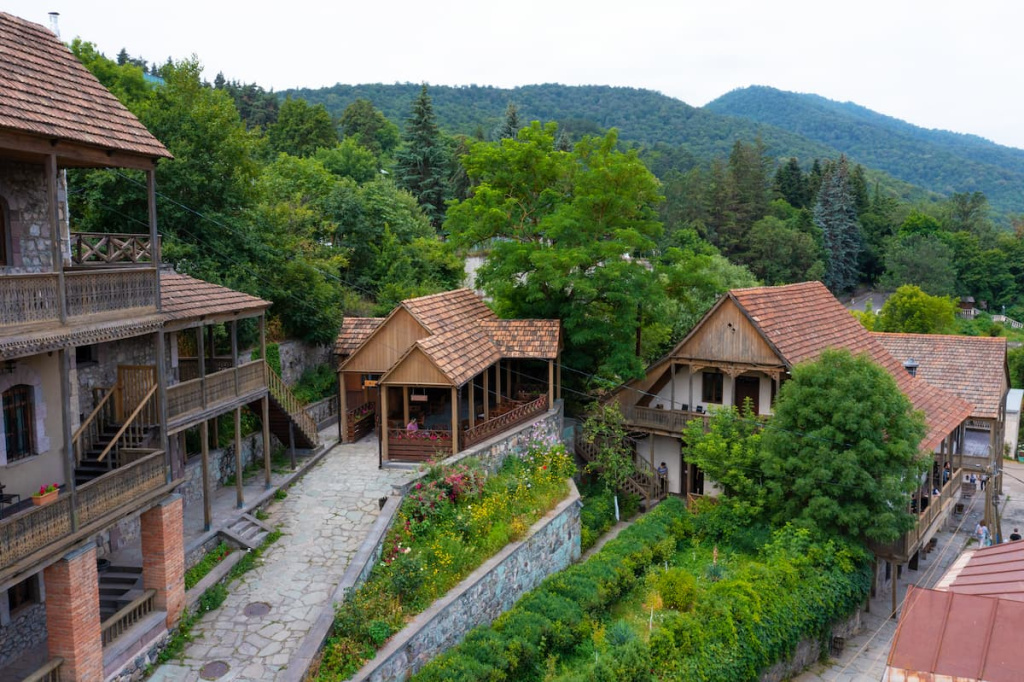
The spirit of Dilijan of the late XIX - early XX century can be felt on the narrow streets, carved balconies and carpets hung on them, going down to the Old Dilijan complex, built on Sharambeyan Street. The complex was built in 2004, but everything was recreated as accurately as possible. The Tufenkian Old Dilijan Complex Hotel is located on this authentic street, as well as the workshops of local potters and wood carvers are compactly located, who can show their work and a master class to everyone.
H. Sharambeyan Museum of Folk Art
One of Dilijan's oldest buildings, the H. Sharambeyan Museum of Folk Art, is located in the city center. The authentic building with columns and a balcony from 1896 contains works by modern masters, as well as household items and ethnography. Previously, the building served as the summer cottage of Mariam Tumanyan, a hereditary princess from the family of Artsakh princes and philanthropist. She organized cultural evenings there with representatives of the Armenian intellectuals. Among the guests at her house were such important figures of Armenia as Hovhannes Tumanyan, Alexander Shirvanzade, Armen Tigranyan, Leon, Avetik Isahakyan, Azniv Hrachyan, Siranuish, Hasmik and others. The museum is currently under reconstruction.
Khanjian Villa
The atmospheric villa of Aghasi Khanjian is an abandoned summer residence built in 1936 in the style of Soviet modernism for an important political figure of that time. The villa as a historical monument has republican significance in Armenia. Despite the fact that Khanjian never managed to enjoy his villa, as he was shot during interrogation on July 9, 1936, the exceptional and recognizable architecture of the building with a circular layout still attracts many tourists. On the territory of Khanjian's country villa there is a very curious sculpture - the "Forest King", which was carved from a pine tree by sculptor Ara Sargsyan, who was vacationing in Dilijan with his family. Noticing an unusually shaped pine tree with a forked trunk, as if with outstretched arms, he decided to give the tree a new life by turning it into a wooden sculpture. The Khanjian Villa is a private area, but it is possible to see it during festivals and other events taking place next to it.
Amphitheater
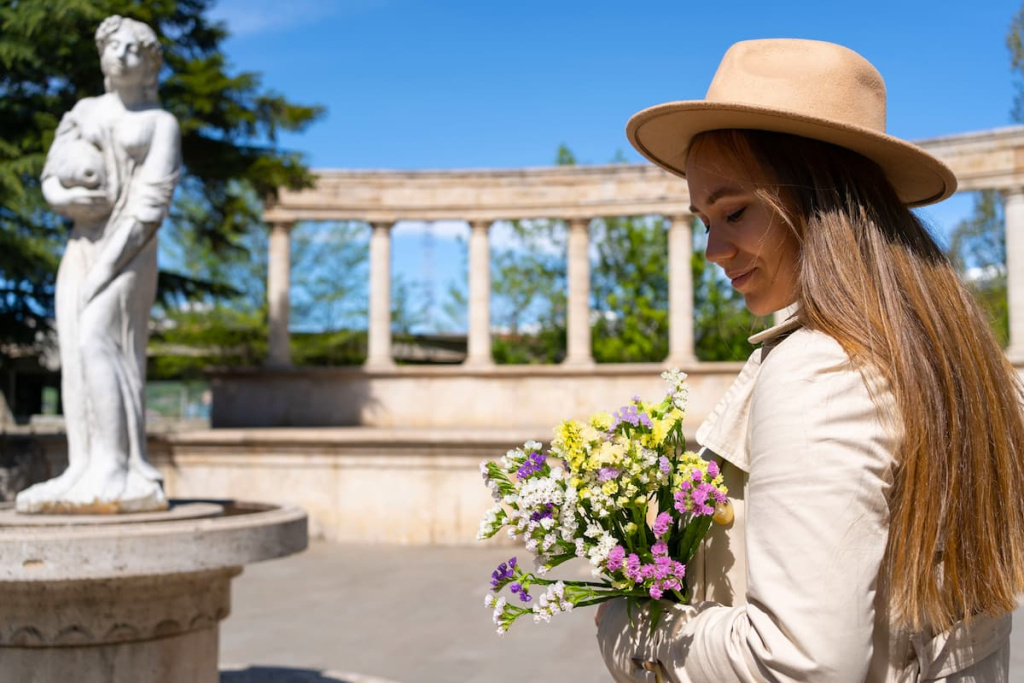
Dilijan Amphitheater is an atypical architecture for the city in the ancient Greek style: a symmetrical structure with columns and steps, where a female statue with a jug flaunts in the middle. You might think that this building is hundreds of years old, but the Amphitheater was built in 2008 and is designed for various events. There is a stage, seating, and large columns. A statue with a jug, similar to an ancient goddess, deserves special attention. It is called "Vardavar" (in honor of the Armenian holiday).
The Local Lore Museum
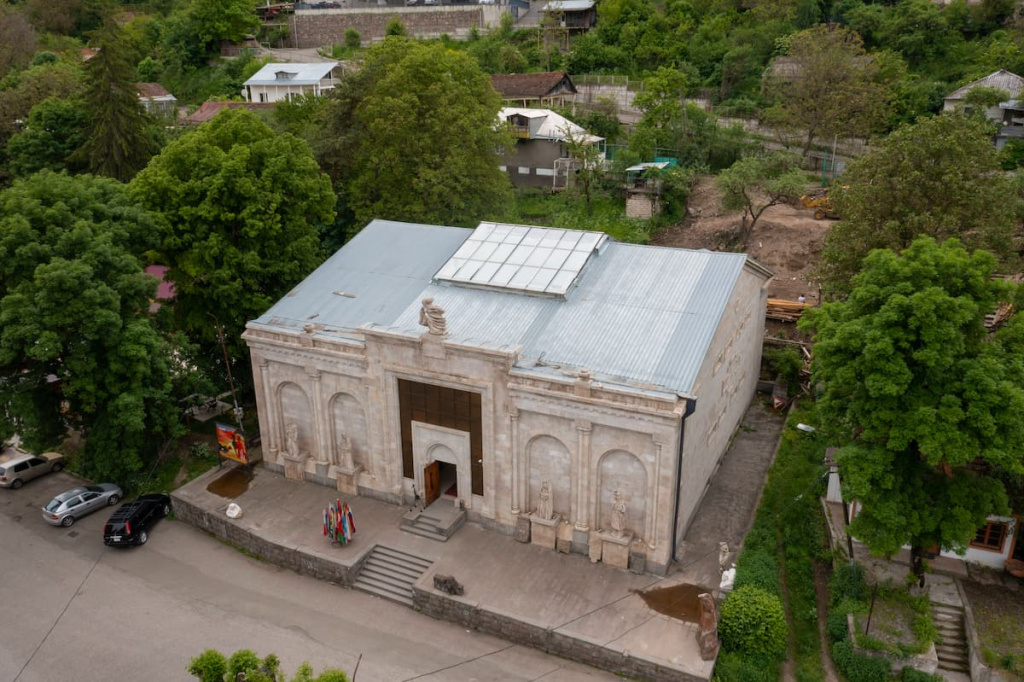
The Local Lore Museum is a massive white travertine building with impressive sculptures, built in 2010 on the site of an old building that served as a hotel and museum. This museum is a real treasure trove of archaeological objects and works of art. The Museum of Local Lore will open to you the world of talented artists of world renown, namely Aivazovsky, Saryan, Kent, Shishkin. The museum has an archaeological section, where exhibits found in Dilijan and related to the era of "late Bronze" and "early Iron" are presented. The museum also features paintings from the Hermitage, Armenian artists from different eras and an interesting exhibition of chairs.
Composers' Creativity House
The appearance of Composers' Creativity House was an event of the All-Union scale, which left a huge mark on the history of Dilijan and the entire USSR. This unique complex, located high in the wooded mountains, has been a meeting place and inspiration for many outstanding composers and musicians. The House of Composers' Creativity was built in 1963 and consisted of eight cottages. Khachaturian, Shostakovich, Rostropovich, Saryan, Plisetskaya and many other world-renowned artists rested and worked here.
We have reviewed an incomplete list of attractions in Dilijan and its surroundings. The #GoToDili team will provide you with a choice of excursions and tours, within which you can explore all the places accompanied by local guides. Come to Dilijan, and our team will discover the city for you from an unexpected and attractive side!
Any other questions?
Our specialists will contact you as soon as possible


